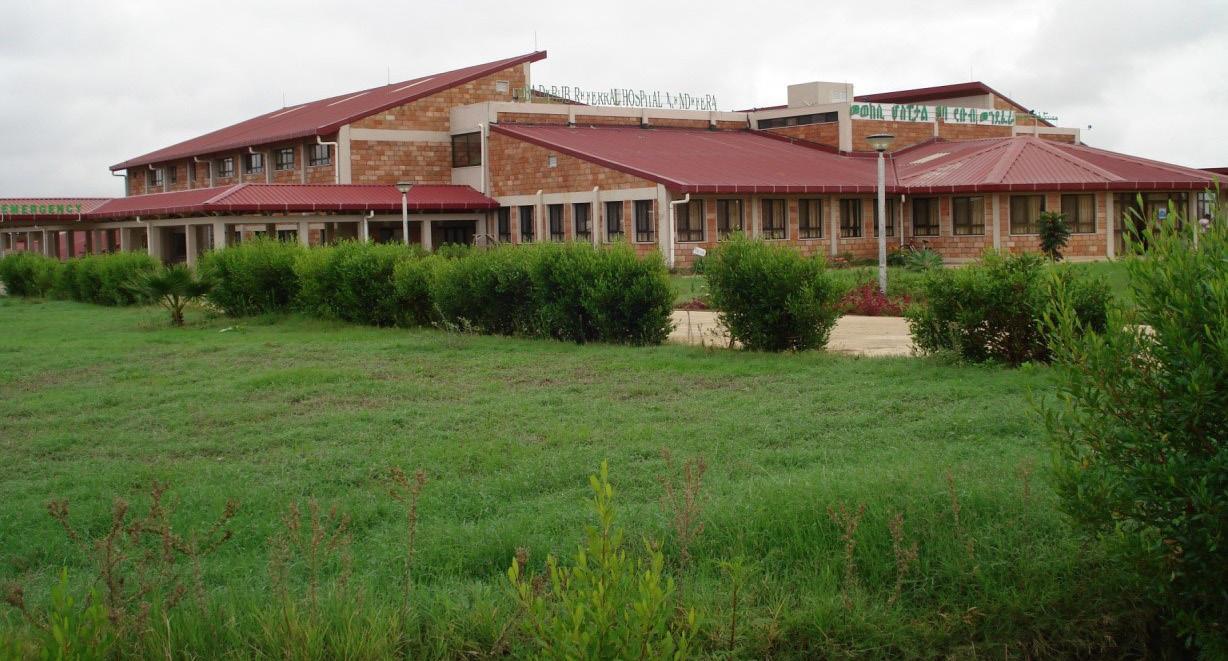Africa-Press – Eritrea. With its expanded program on health care facilities, Eritrea’s Ministry of Health (MoH) is committed to providing cost-effective services to the entire population. Since 1991, it has made tremendous progress in ensuring access to health care services, in general, and immunization services, in particular, by restoring healthcare facilities that were devastated during the war for independence and building numerous new healthcare facilities.
Today, the MoH runs 27 hospitals, 55 healthcare facilities, and 187 health stations. The astounding achievement in health care is primarily attributed to the efforts of the MoH and its partners in controlling malaria, eliminating vaccine-preventable diseases such as measles, and improving the means of prevention and case management of major deadly childhood diseases such as ARI and diarrhea, and malnutrition.
In the Southern region, whose population is 790,416, the MoH operates two regional referral hospitals, seven community hospitals, nine health centers, two clinics, and 42 health stations. Dr. Amanuel Mihreteab, director of MoH’s branch in the Southern region, said that according to MoH’s policy of community-based health care, they are working with various ministries, organizations and communities for the improvement of healthcare services in their region. The renewed strategy of the MoH, Dr. Amanuel added, is bringing about tangible improvement on the expansion of the health care system and the well-being of the society.
Dr. Amanuel emphasized that the MoH’s shift in strategy from disease-centered to patient-centered provides an opportunity to address a patient’s condition by looking at various dimensions rather than just the disease. By adopting this method of treatment, a citizen’s health condition could be properly addressed in accordance with his or her immune capacity, vulnerability, environmental exposure, and age. And the policy of primary prevention through community-based interventions is helping promote positive behavioral changes at the community level using integrated multidisciplinary, multi-sectorial and private/public mix approaches. Behavioral change communication (BCC) has also been developed and implemented to promote healthy life style and decrease risk factors using the integrated health promotion strategy of the MoH.
According to one of the MoH’s strategies, 70% of diseases will be treated at primary level health care facilities, with the remaining 20% referred to regional referral hospitals, or secondary level health care facilities. This means that approximately 90% of diseases can be cured within a region’s health care facility. As a result, Dr. Amanuel continued, MoH’s branch at the Southern region is fully committed to this strategy and is operating accordingly.
In addition to providing surgical services for glaucoma at Mendefera’s referral hospital, the surgical team also conducts surgeries by travelling to health care facilities throughout the region. Equipped with basic diagnostic tools and medicines, a total of 727 malaria supervision representatives are assigned to all the villages in the region. Mosquito nets are given to communities and insecticides sprayed in households during the malaria season to combat malaria. Furthermore, environmental sanitation is maintained regularly, by focusing on potential mosquito breeding sites, to eradicate malaria from the region.
Approximately 80% of the population of the Southern region receive healthcare services within a 10-kilometer radius. And those that live in remote areas get services at home by medical workers who make monthly visits to communities in those locations using ambulances or pack animals. There are 110 difficult-to-reach locations, 20 of which are on cliffs, that access healthcare services from the mobile health care teams. Many of them are found along the eastern escarpment in Adi Keyih subzone while the rest are found in Areza and Debariwa subzones.
There are safety precautions that must be taken regarding child and mother care, and Dr. Amanuel said that since last year they have been giving pre-conception care. Pre-conception care, which focuses on counselling mothers before conceiving a baby, allows the mother to be fully prepared and learn about her current health status before conceiving a child. Expectant mothers are required to have at least eight prenatal checkups, and postpartum care is made available to help mothers with post-delivery complications.
Prenatal care in the Southern region has increased by 9% since the previous year. Last year, over 12,000 mothers delivered at health stations, which is 54% of the total number of mothers that gave birth in the region. This is an increase of 16% over the last five years. Additionally, the number of mothers who had caesarean delivery has risen to 47%, which represents 6.4% of the total number of mothers that have given birth at healthcare facilities.
One of the primary reasons for the growing number of mothers giving birth at health care facilities is the expansion of Maternity waiting homes (MWH). Seven years ago, there were only three MWHs across the region. Today, there are 28, with four more set to begin shortly. Another factor is the expansion of Caesarean section services. Five years ago, Caesarean sections were performed only at the referral hospitals of Mendefera and Dekemhare, but this time the hospitals of Adi Keih, Adi Qual, and Senafe have been added. As a result, maternal death rate in the Southern region has come down to 0.06%.
The death rate of newborn infants (neonatal death) has also fallen to 2%. Five years ago, intensive care service of the newborn was available only in Mendefera, but it has since been spread to the region’s other four major hospitals: Dekemhare, Adi Quala, Senafe, and Segeneyti. This has been done to reduce the number of infant deaths in the early days, which are often caused by lack of basic medical care when the newborn is at its most vulnerable stage. Growth monitoring and promotion program has been introduced to monitor children’s physical and mental health development. Nutritional therapy and assistance for mothers, and advising mothers to breastfeed their children without any supplements for six months.
Dr. Amanuel noted that in 2023, over 40,000 children were checked in this manner, with more than 80% of the children falling into the category of good and better health wellness. Vaccinations are given in the region against 17 diseases, exactly like the rest of the country, and cover 94% of the targeted population. Introduced in 2002 and 2008, vaccinations are given to children against a variety of vaccine-preventable diseases, including tuberculosis, diphtheria, whooping cough, tetanus, polio, measles, hepatitis B, and Homophiles influenza type B.
When it comes to communicable diseases, new HIV infections have dropped to 0.10%. MoH’s branch at the Southern region is constantly conducting diagnostics, with focus on the most vulnerable groups of individuals, in order to address and eradicate new infections. Last year, 1% of suspected tuberculosis patients tested positive. TB treatment outcomes have also improved, from 90% in 2022 to 93.6% in 2023. The prevalence of non-communicable diseases (NCDs) and related risk factors in Eritrea appears to be relatively low when compared to numerous other nations in the region. NCDs are the major cause of death globally, accounting for 71% of deaths.
Through campaigns carried out by the concerted efforts of the MoH and the regional administration’s office, awareness of the people about communicable diseases and harmful practices such as female circumcision has been raised, patients of fistula have been encouraged to seek physical and psychological care at the fistula care station in Mendefera, and around 92.7% of the territory is now entirely free of open defecation. This year has also seen the introduction of some new equipment, including new and modern anesthesia machines and modern autoclave machines, as well as five chlorine making machines, raising the number from five to ten.
For More News And Analysis About Eritrea Follow Africa-Press







